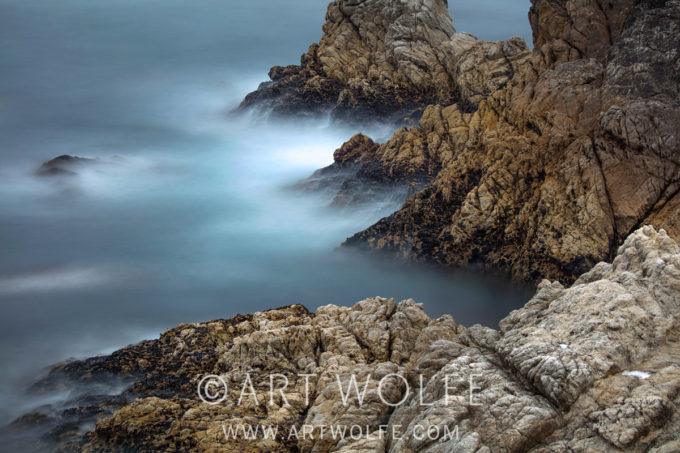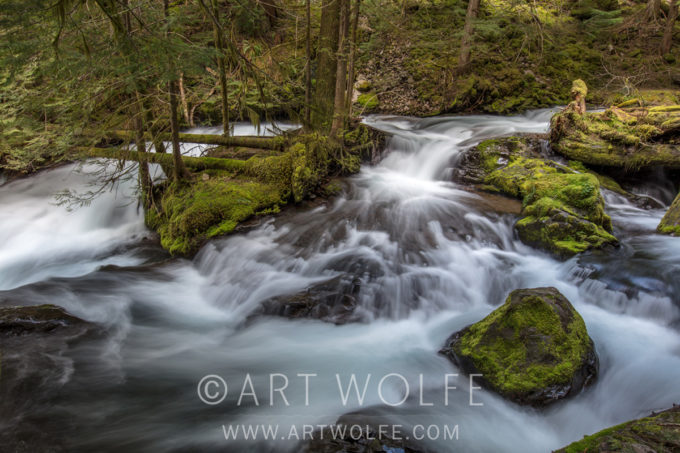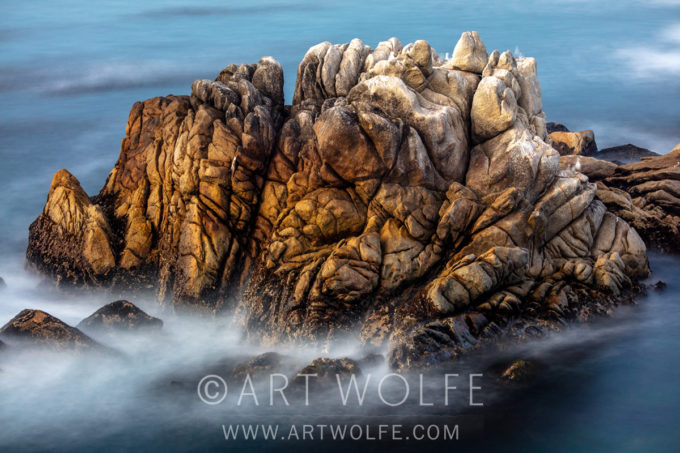Technique Tuesday: Neutral Density Filters

As we are in the middle of a couple of West Coast workshops where coastlines, waterfalls, and woodland streams take center stage, now is a great time to discuss the use of neutral density filters. In the summer months where overcast days become rare even in a region fabled for it’s grey skies, ND filters are a necessary tool for outdoor photography.
Simply put, an ND filter will reduce the amount of light your sensor receives without affecting the color of your capture, therefore allowing you to use a wider aperture, capture a longer exposure – or both. This is especially useful when you’re shooting outdoors on a bright, sunny day, or trying to expose for soft waves and motion in water. If you’ve done this without an ND filter, then you know how hard it can be to get the exposure correct without having a blown-out sky and over-bright highlights.

ND filters come in several stops, with the cheaper 1, 2 or 3 stop filters being common – however I highly recommend spending the extra money on a 6-stop or even 10-stop ND filter. These will block out more light, and give you the greatest amount of leeway in using your camera settings to achieve your desired results.
A 6-stop filter will be good enough to expose for blurred waves and streams, and capturing the scene without an over-bright sky, while a 10-stop will create the foggy dream-like haze of water in motion. In either case, you will cut down on blown-out areas of your photo, balancing out the tones while keeping true-to-life colors and exposing for the proper amount of detail.

Though most of my use for ND filters involves apertures in the 11-13 range to capture all the details of a landscape, or as low as 5 for a scene that may not need all the details sprawling to the horizon, an ND filter will also allow you to open up your very wide. This way you can photograph a specific subejct outdoors on a brighter day while still keeping your aperture wide enough to achieve an out of focus background.
For more ND tips and others check out my how-to books, “The Art of the Photograph” and “ The New Art of Photographing Nature“!



Great article, thank you very much. I absolutely love this series “Technique Tuesday”. Greetings from Brazil.
Thanks for the article. Having shot without them for years, I recently bought my own set. I now know the value ND filters have when I want the feeling of movement in water scenes.
Cheers
With respect, it isn’t clear to me why the use of a plain ND filter (as opposed to an ND grad) would cut down on blown out highlights (per your 2nd par.). They usually occur because your subject is in the shade, the sky is a lot brighter, and the dynamic range is too great for the sensor to capture. Putting on a 6, 10, 12 or 15 stop grad wouldn’t change the ratio between e.g., waterfall in the shade and bright sky. It would cut down the light reaching the sensor from all parts of the scene equally, and the sky would still be so much brighter in comparison that it would still blow out. To prevent blowout, you would need an ND grad to hold back the sky, no?
Good question.
True, there still is the question of the overall contrast of the scene (and a graduated will address this some), but there are some techniques to minimize this, such as subtle HDR processing from multiple shots. Similarly, the composition of the shot: note that the sky isn’t present in some of these examples.
Is blow out another way of saying that the brightness of the sun ruins the photograph?
Generally you want to avoid any portion of your photo becoming “pure white” – as it’s then missing valuable information you can no longer edit in post. This often happens when you have a bright sky and you’re also trying to expose for darker foreground elements.
The original comment Jonathan made is very true – a graduated ND filter is very useful for such a situation, ensuring you can expose for those darker foreground subjects, but also not allow too much light from the sky to reach the sensor.
That being said, as -hh mentioned, I’m often choosing to frame my shots in ways that don’t often include these dark elements with the sky itself. Unless there is a reason to do so, and you’re trying to inform the viewer of the subjects relationship to the sky, there are often more creative ways to get that shot. There are also many things you can do in post these days to help!
Hi Art,
Breakthrough Photography gave the link to this page for the “full Art Wolf review” This page says nothing about that filter.
Do you say it is the best or is Break Away doing a bait and switch.
https://breakthrough.photography/products/x4-neutral-density?variant=30850759569
Thanks Art.
Hi Darryl,
Art has been using Breakthrough filters for nearly ten years now. There is more info here: https://artwolfe.com/2014/11/19/breakthrough-photography-launches-new-ultra-slim-filters/